We occasionally link to goods offered by vendors to help the reader find relevant products. Some of these may be affiliate based, meaning we earn small commissions (at no additional cost to you) if items are purchased. Here is more about what we do.
Do you think you’re wasting too much food at home? Does your trash can pile up with garbage bags every week from just your kitchen alone?
It’s time for a change!

Not only are we unnecessarily tossing food that we should have tried saving, we are also throwing our money in the garbage.
In a 2020 study published by the American Journal of Agricultural Economics, an average U.S. household wastes 31.9% of the food purchased annually. By this figure, the total annual consumer-level cost of wasted food is an estimated $240 billion, or $1,866 per household.
How are we able to lower this hefty sum of food waste and useless spending in our own households?
We can actually adopt some practical methods, starting immediately.
Here are 9 easy ideas that will help all of us to be less wasteful in the kitchen, and put our hard-earned cash – and maybe even our food scraps – to better use!
9 Easy Ways to Be Less Wasteful in the Kitchen
1. Compost
You know, all those cores, peels, pits, rinds, skins, and coffee grounds that you throw away on a daily basis can be salvaged for another purpose…
Turning your food scraps into kitchen compost is one of the most proactive ways to reduce and repurpose your food waste at home and bolster a positive impact on the environment.
Vitamix FoodCycler FC-50, available from Vitamix
It’s also easy and fun to practice when you understand every step of the process and have the right tools!
And if you enjoy gardening, it’s an economical way to add organic, natural nutrients all of your plants will love.
You can even simplify the task with a countertop appliance like the FoodCycler FC-50, available from Vitamix. This compact model has a capacity of up to 2.5 liters. If you are looking to compost a larger quantity, consider purchasing the FoodCycler Eco 5 from Vitamix, which has double the capacity of 5 liters.
Learn how to get started now by reading our Kitchen Composting 101 article, where we will teach you four easy methods to repurpose food scraps!
2. Create Crumbs and Croutons
Don’t throw out that old, dried out, crusty bread!
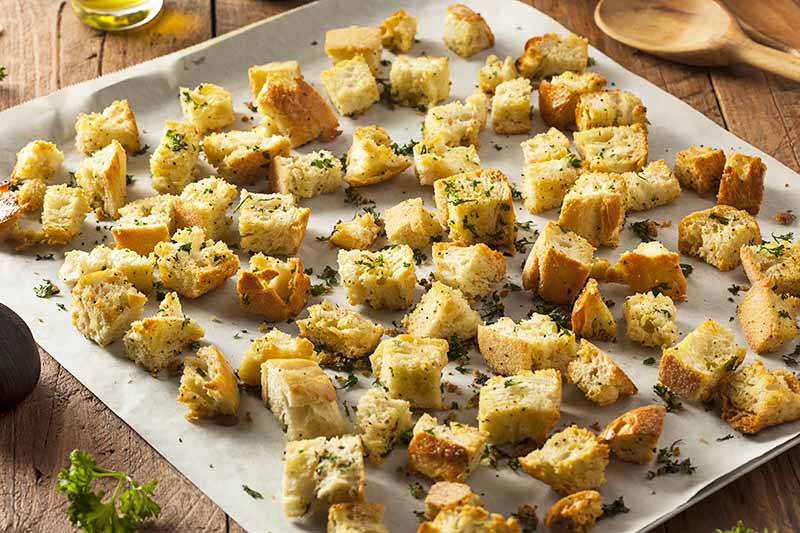
As long as you don’t see obvious signs of mold, stale bread and the unpopular ends of loaves are both perfect in soups like gazpacho and pappa al pomodoro.
But they’re also ideal for making croutons to top soups and salads. And you can process them into fine crumbs to use as a binding agent in meatballs and veggie burgers, as a crispy topping for mac and cheese, or as a coating for salmon burgers, crab cakes, and baked fish fillets.
We explain our technique for making crunchy seasoned croutons in our recipe for classic Caesar salad, a savory dish to serve as a side or as a hearty lunch topped with grilled chicken.
And if you’re curious about how to make and store homemade breadcrumbs, you can review the required steps and different variations in our article explaining the differences between breadcrumbs and panko.
You’ll never waste bread again!
3. Cycle Through Your Inventory
Use the ever-reliable FIFO system to ensure food doesn’t get lost in the back of the fridge or your pantry, hidden behind more recent purchases or prepared foods.

FIFO stands for First In, First Out. Here is the basic concept:
Any item that was bought or prepared first should be used before something that was bought later.
Every time that you buy a new item, you should put it behind any older ones, and keep the oldest items towards the front of the shelf.
If it is helpful, you can also use labels on your food containers to help you organize and identify each food item and the date you bought, opened, or prepared it.
And maintaining a clean, well-organized kitchen area, including the fridge and freezer as well as your pantry, will make a huge difference in monitoring the status of all of your food items.
Not only will you have a better idea of what you have on hand, you’ll be using perishable goods in a timely manner at their peak of quality and freshness before moving onto newer items.
4. Freeze Extra Liquids
It’s a sad day when an open bottle of wine spoils, or a half-used carton of chicken stock goes bad.
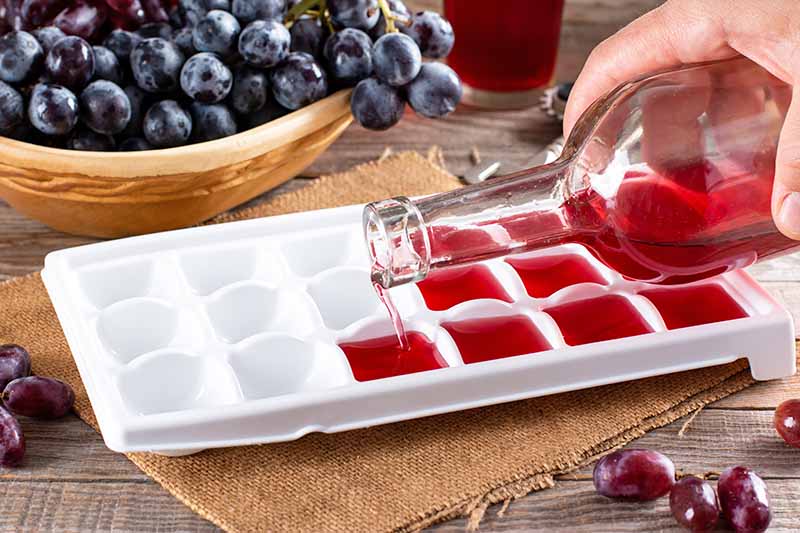
Don’t let this tragedy ever happen again in your home!
Rather than pouring the remnants of your vino, stock, or broth down the sink, pour anything left into ice cube trays and freeze until solid. Transfer them to freezer-friendly airtight containers or freezer bags and freeze for up to six months.
Use these the next time you have a recipe that calls for a little wine, or when you need to loosen a soup or stew with a little more stock. These cubes will be useful to have on hand.
Rather than opening a completely new bottle or box, you’ll have just the right amount you need to use in a recipe with a stash of these cubes in the freezer.
5. Go Airtight
Packages of cereal, crackers, and pasta can become stale quickly after the original packaging has been opened, and often end up getting tossed just as quickly.
OXO Good Grips 5-Piece POP Container Set, available from OXO
To extend the shelf life of dry goods, buy some containers or canisters with secure, airtight lids.
Storing these types of foodstuffs in airtight containers will help to retain their freshness much longer.
You can purchase this OXO Good Grips 5-Piece POP Container Set of stackable and space-efficient plastic food storage containers directly from OXO. You won’t be disappointed with these optimal storage accessories for your dry goods!
But the ultimate method of making your food airtight is definitely through the use of a vacuum sealer.
If you are really into long term storage, you can also look into oxygen absorbers. And don’t overlook these general tips for finding and using kitchen space and storage!
6. Preserve Fresh Herbs
If you buy herbs from the store and you get a whole bundle, how are you planning to use up everything before they start to go bad?
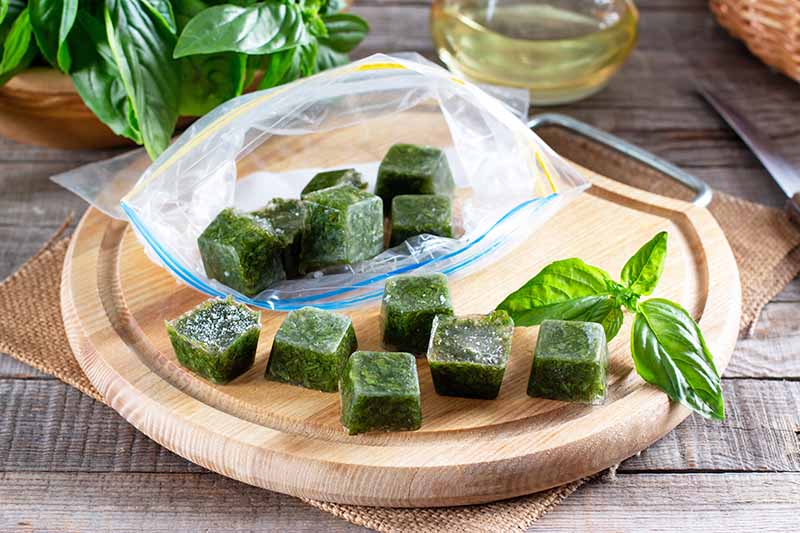
Do you often use just a couple leaves for one recipe, then forget the rest in the back corner of your fridge, left to rot and wilt?
Preserve ‘em!
If you have too many fresh herbs to use them all at once, prolong their vibrant goodness by preserving them in multiple ways.
My favorite method is to freeze them while they are still fresh!
First, mince or shred them coarsely, then gently pack a small amount into each compartment of an ice cube tray.
Then, pour some olive oil over the chopped herbs and transfer the tray to the freezer. Once frozen, you can pack and store them in an airtight container or freezer bag for the next six months.
To add an herbal boost to recipes, toss a couple cubes in the pot when you are making sauces, stews, or soups – the cubes will melt as you are heating your ingredients.
In addition to freezing those leftover herbs, you have more options to get the most out of them, like drying or making flavor-infused oil. Review all of these methods now in our guide to preserving herbs.
7. Shop Smart
Never go shopping without a grocery list – and stick to the items that you have on it!
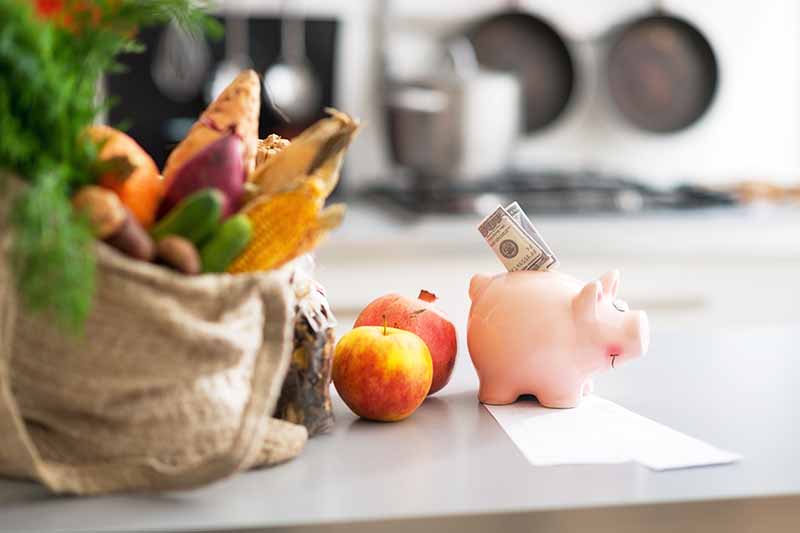
If you think of an essential item or two you have definitely forgotten, that’s fine. Go ahead and buy them. But don’t change your entire meal plan just because something shiny catches your eye!
Impulse buying often results in disregarding important ingredients for the meals you intended to make, and doubling up on items you may already have at home in the pantry or fridge.
To make sure you shop smart, design a meal plan for periods of one or two weeks, and create a shopping list to cover all the meals and snacks within that plan.
8. Understand Ethylene Gas
A number of fresh fruits and vegetables emit ethylene gas, a hormone which promotes ripening.
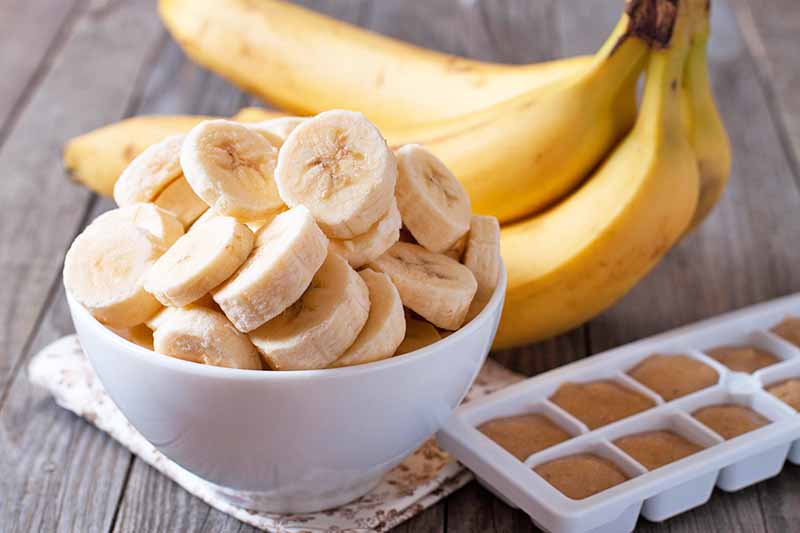
Among many others, common produce items that release ethylene are apples, avocados, potatoes, bananas, and mangoes.
Storing certain fruits and vegetables together causes others to ripen at a rapid pace, causing many to spoil seemingly overnight.
Be mindful of how you are storing your fruits and vegetables in the refrigerator – utilize the high-humidity, ventless bin for produce with a high water content and the low-humidity, vented bin for produce that emits ethylene gas.
And always store cold-sensitive vegetables such as potatoes, garlic, onions, and winter squash in a cool, dry cupboard – not the fridge.
You can skip the cold storage altogether for certain fruits like firm or unripe apples, bananas, avocados, stone fruits, and tomatoes.
For more thorough advice on this subject, review our article on how to properly use the crisper drawers in your refrigerator.
Fruit that’s past its prime may not look pretty, but it’ll still taste fine when pureed into smoothies or cooked and strained into berry syrups.
The goal here is to preserve extras that might be a little bruised, or a little too ripe to enjoy on their own as is, before they’re rotten or moldy.
Keep a large zip-top bag in the freezer to collect any pieces that are no longer aesthetically appealing, which will slow down ripening to an extremely slow rate.
Bananas are particularly suited for freezing once they start getting overripe, and they are very useful when making banana bread, cookies, and many other recipes beyond the typical baked loaf.
9. Use Up Leftovers
Do you often throw away half-eaten leftovers, at least a few times every week?
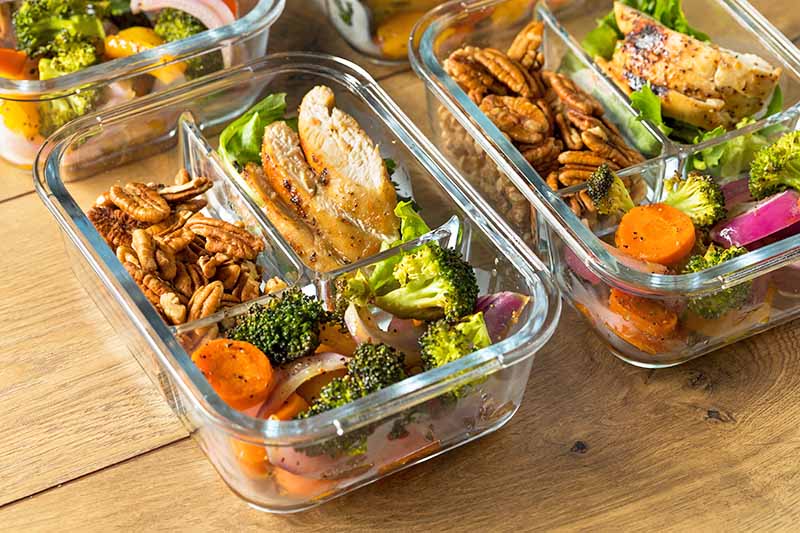
When you create your meal plan for the week, be sure to strategize ways to use up alllllll the leftovers – or at least the majority of them!
Plan at least one or two meals each week when you are required to eat your leftover lunch or dinner to keep food waste to a minimum.
If you get bored eating leftovers in the same exact format as the original, this is your opportunity to get creative with new ideas to use the same foods in different ways.
For example, if you made a classic meatloaf one day, you can devote your next meal to utilizing the remaining slices in a hearty meatloaf sandwich.
And leftovers from the other night can be recreated as a comforting pot roast soup.
Sitting on a bunch of roasted or grilled vegetables from a side dish? Chop them up, mix them with eggs, and make a delicious egg bake or frittata.
And an end-of-the-week mixed salad is always a smart idea to combine and use up small bits from various airtight containers that you have in the refrigerator. Toss everything together in your wooden salad bowl with a homemade vinaigrette to make the meal extra special!
Less Waste = Big Benefits!
These are just a few ideas to get you started with being less wasteful in the kitchen. They’ll save you money, and ease your conscience when it comes to heedless habits.

Hopefully, some of these easy tips and tricks will inspire you to follow a healthy kitchen lifestyle that focuses on mindfulness as you are selecting, storing, using, and disposing of ingredients.
How about you? What are some of your favorite tips for attentive kitchen practices that stretch your food budget, and ease the burden we put on the environment?
Leave a comment below!
Looking for other ways to save money, resources, and time in the kitchen? You can make all the right decisions with a can-do attitude and smart prep work! Take a look at these other helpful articles for further encouragement:
- Foodal’s Ultimate Guide to Dehydrating Your Garden’s Bounty
- How to Start Canning Your Own Foods at Home
- 5 Spectacular Ways to Use Up Leftover Egg Yolks
© Ask the Experts, LLC. ALL RIGHTS RESERVED. See our TOS for more details. Product photos via Vitamix and OXO. Uncredited photos via Shutterstock. Originally published by Lorna Kring on February 6, 2016. Last updated on May 16, 2023.
About Nikki Cervone
Nikki Cervone is an ACS Certified Cheese Professional and cheesemonger living in Pittsburgh. Nikki holds an AAS in baking/pastry from Westmoreland County Community College, a BA in Communications from Duquesne University, and an MLA in Gastronomy from Boston University. When she's not nibbling on her favorite cheeses or testing a batch of cupcakes, Nikki enjoys a healthy dose of yoga, wine, hiking, singing in the shower, and chocolate. Lots of chocolate.

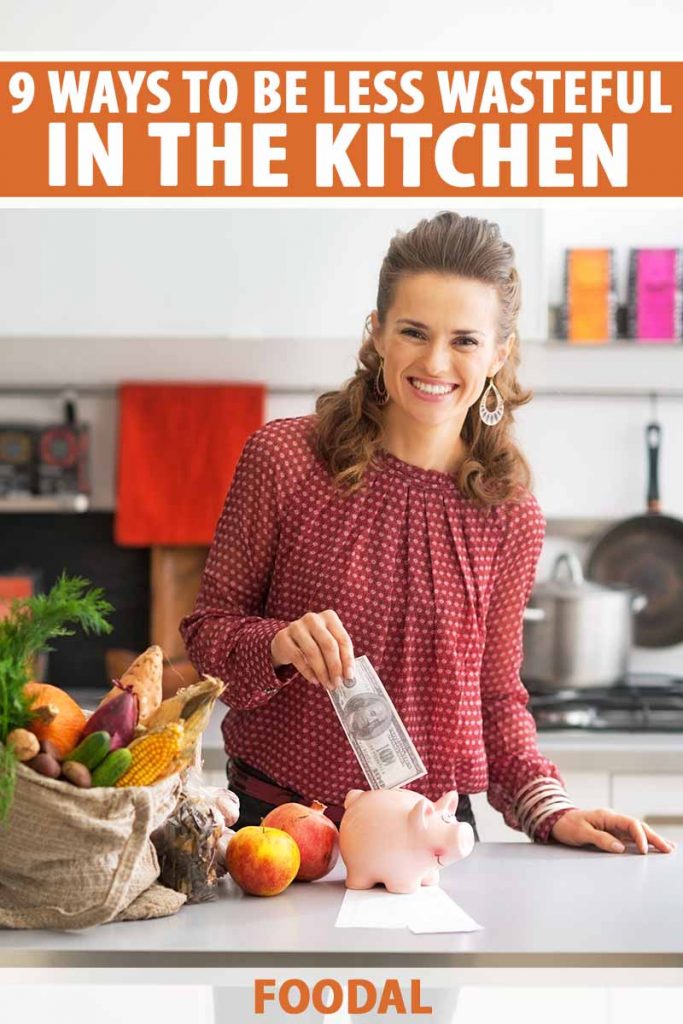

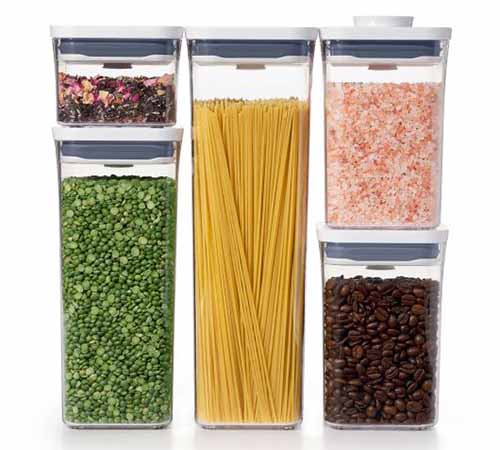

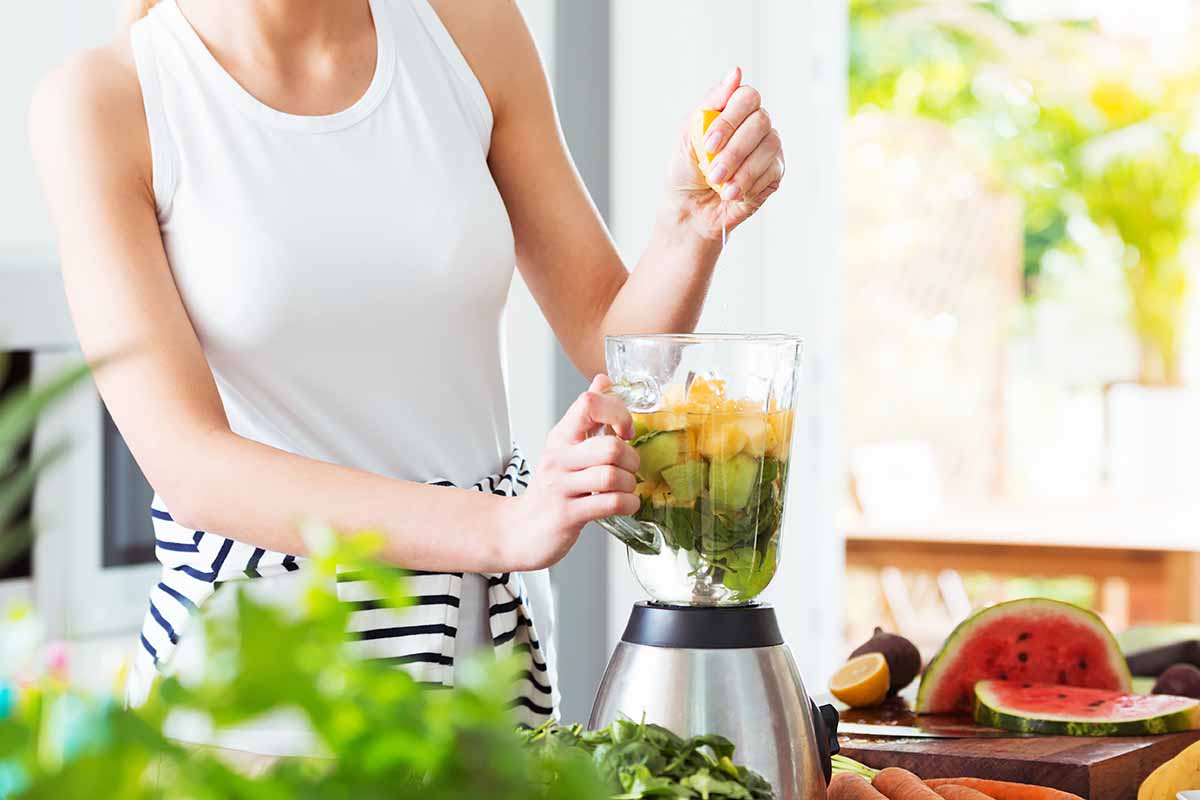

This is such a smart article! I did not realize we wasted THAT much food. I knew I did, but never thought about how much. These tips are things people don’t even think of. I had no clue you weren’t suppose to store your fruits and veggies together. I always just threw them together in the fridge or pantry. The freezing the fruit idea is great. I hate really ripe fruit, I don’t know why, but I do. But for smoothies it would be great because ripe fruit is sweeter hence a sweeter smoothie.
You’re so right Verity, we usually don’t think about our habits, because, well… they’re habits. So it’s a good thing to have a closer look on occasion in order to make some adjustments. Glad you liked the post.
Great list! Personally, I believe I’m pretty good about using up my leftovers. I always feel really wasteful throwing away food. I won’t make myself sick to save a few bucks, but I always try to make sure that leftovers get eaten as soon as possible. I’m terrible, however, at knowing my inventory. I have a bunch of food in the basement and some of the cupboards that I wouldn’t know of off the top of my head. I try to only store stuff that I know keeps for a long time, but when you assume that, you tend to let it sit for a long time until you suddenly decide to check and see that it’s expired or really close to it. I really have to work on that.
Long term storage can get away on us Tsuzuko. I try to tie in checking the expiry date with two other annual events – planting spring veggies and shopping for Christmas baking ingredients. That way, if anything is close to expiring I’ll take them to a local food bank so someone else can use them – it feels much better than throwing food away!
Minimizing waste in the kitchen is such an important skill to learn. The financial aspect alone makes it more than worth it. A small thing like making a grocery list before shopping can make an appreciable difference in the household budget. I’ve started organizing my grocery lists so that leftovers can be used in later meals and it’s definitely been saving me money. It feels a lot less wasteful too not to be getting rid of a fridge full of spoiled vegetables.
I love the tip about freezing leftovers herbs too! I never manage to use them all up before they go bad so I’m definitely going to start doing this 🙂
Over time, those small things can make a big difference – and who needs the guilt of having to get rid of spoiled food?!
Glad you enjoyed the tips!
Being less wasteful in the kitchen is a great feeling. In an effort to eat healthier I would go on a bit of a produce binge and buy way more than I could use before it went bad. Using the tip to always make a list has been very helpful. I have also been just buying enough for a few meals at a time and making sure to use the leftovers.
The tip about making croutons is fantastic, sometimes it is tough to get through a whole loaf. I will be using this tip for sure. 🙂
It is a great feeling gennyp, and really doesn’t require big changes to have a positive impact. Like the way you’re shopping for a few days and using a list – less wasteful and saving money, it’s a smart way to go!
Oh boy, I’m trying to think of something different I could add to this list, but I can’t. I do pretty much all of the things listed in this article, except the freezing of the wine. I don’t drink wine that often, so we rarely buy it, and this idea is perfect for someone like me. Since I don’t purchase it on a regular basis, it would be nice to have some wine on hand when a recipe calls for it. It’s basically the concept I use for chicken broth, I make a big batch of chicken broth and then freeze it in ice cube trays, and then when a recipe calls for chicken broth, I have it on hand.
Exactly the same as for stock cubes atlmom5. And don’t you feel like a savvy cook when you know you’ve got the ingredients on hand thanks to a little planning?!
I’m shocked that people waste so much food while their neighbors next door are starving! I really appreciate the article, and I’ll send it to all of my friends. I think that it’s vital that people are aware of how their choices affect others and society in general.
My favorite advice is the crouton one – I never thought about it for some reason, even though I felt bad about throwing away bits and pieces of stale bread.
Awareness is key to changing our habits Elfprincess, thanks for sharing the post!
I am very much guilty of shopping without a list. Of course, I generally don’t throw much away since I don’t buy much to begin with.
When I go shopping I bring my phone with me and plot out my meals as I shop. It’s probably not the best way to do it, but when I sit down and try to work out a plan for the next few days/week, I always draw a blank. It’s only when I’m walking around the store and looking at things that I get any ideas.
Of course, I always have my phone’s browser set to some recipe site and when I see something that piques my interest, I see what recipes people have come up with and gather the ingredients that I need that I don’t already have at home.
We all find our inspiration in different places korriken! And if working out a meal plan in the grocery store works for you, why change? At least you’ve got a system to follow.
This article could not be written any better. I feel guilty when I even turn on the tap a minute extra after washing, it makes me feel like I am wasting resources, talk more of food. I am not a fan of left overs, I would rather have my food fresh and hot and that is why I cook with moderation. You can’t help it sometimes but when you can they need to be preserved. I consider it a personal sin to waste food; I always have this thought that there is someone out there who needs the food I am about to waste.
Wasting food is probably one of the few good uses of guilt – if it makes us think twice about doing it! And cooking in moderation is a great way to take care of leftovers darkrebelchild, thanks for your comments.
This article is great for many Americans who do not realize how much food they are throwing away on a weekly basis. I have one more tip to add to your list, Poaching. A lot of times when we have purchased vegetables or meats that we planned on using but some how managed to forget, they tend to go bad and thus we end up wasting money once again. If you start to notice that your food may be nearing its end date, you might want to consider poaching your foods with some light seasonings that you use on a regular basis. Once poached, you can begin freezing these items and worry less about them going bad. Hope this helps, good luck.
That’s a great tip SOL. Poaching is easy to do and you have the bonus of a dish already cooked in the freezer, just waiting for the right time to serve it up! Thanks for sharing.
$10 000. That’s a lot of money right? Well that’s how much Lorna just saved you. Over the course of a decade you can EASILY waste 10 grand. Many of these I already have been doing because it just makes sense.
With leftover wine (I KNOW that should be an oxymoron right??) we stick the whole bottle in the freezer and use it as cooking wine.
I never thought about putting things in airtight containers though. Makes sense, it’s not like those flimsy cardboard tabs are doing anything.
LOL, good one jonyMacD! I know… ‘leftover wine? What’s that?’
And when you extrapolate the savings over a decade, it does make for a big chunk o’ change!
This is some excellent advice, Lorna! This topic is very important to me because I hate wasting anything soooo much. And if I can find new ways to prevent that, I’m always happy. 😀
Oh yes, the fruit and veggie issue! I’ve had such trouble with bananas for that very reason. I’ve tried different things I’ve heard and read about and nothing seems to be what I’m looking for yet. They just simply ripen and get too soft *much* too fast for me… we’re talking just a short number of days here most of the time. 🙁
Love the idea for freezing herbs… and I really need to not only re-stock the pantry, but find a system to keep track of what I have. I’ve been in the “use up what I have” mode for long enough now… it’s time to replenish!!
Glad you enjoyed the tips Kate. And if you really want re-stock the pantry, consider donating some of the older goods to a food bank – they’re always grateful, and if feels pretty darn good too!
Although we try to use up leftovers for lunches, we do have an issue trying to keep produce fresh. Leafy greens especially seem to go bad in just a few days. I’ve heard there are products that are supposed to absorb the ethylene gas cast off from produce to help them stay fresh longer. Do these products seem to help much?
I’ve never used them myself lebrennan, but the reviews for Bluapple on Amazon seem to be quite favorable. As long as you remember to replace the absorbent packet every three months or so.
Anyone else have an opinion on the ethylene absorbents?
I really like this. I see so much waste, and in fact, I’m guilty of it myself. I try to be careful, yet when I cleaned out my fridge the other day, there was more thrown out than I care to admit.
I have begun utilizing some of these tips already, such as the inventory thing. I’m in the process of organizing my kitchen, so that I can take stock of everything at a glance. It should really help,.
The part about not storing fruits and veggies together is interesting. I did just notice that my lettuce lasted longer on the shelf than it did in the crisper drawer. Now, I’m guessing that it’s probably due to having fruit in there.
Thanks for another insightful post.
I know what you mean Zyni, throwing out food seems so senseless! The good news is that it’s an easy habit to change, when you know what to change… glad you enjoyed the tips.
This article was very helpful for me. Because I am usually just cooking for myself, I end up wasting a lot of scrap food. It makes me feel bad because I know how wasteful it is and how many people can be using the food. I will definitely be using more leftovers because I tend to waste a lot of those. I also love the idea of freezing fruit for smoothies as I have a smoothie for breakfast every morning!
Like freezing overripe fruit, freezing your leftovers is another easy way to less waste alexandra3346. Toss them into a zip lock bag in the freezer, then make them into a hash or mystery pasta casserole with some herbs and seasonings. A quick and easy meal for those nights when you don’t want to cook or your cupboards look like Mother Hubbard’s!
you have definitely enlightened my darkness. These are some really good ideas for conserving. Some I already follow but some I could definitely try out.
Glad you enjoyed the post Zhen25, we can all use a bit more light!
Loved this article. Having grown up on a farm, my parents were quick to let us know ways of reducing our waste. It came as no surprise that I grew up doing certain things in my own kitchen. Little things like saving my coffee grounds to put in my plant pot. Saving veggie peels for my compost bin. Buying BP free plastic bottles rather than always using those plastic bottles, using said plastic bottles as tiny plant pots etc. But I never new you could freeze wine and use it as ice cubes! Genius! I use to use a few grapes!
Question. Do herbs that are frozen lose some of the flavor they provide?
Farmers definitely have some wise ways in the kitchen aquaticneko! And yes, the herbs will lose a pinch of their flavor, but it’s really only noticeable when compared to fresh – they’ll work very well for soups, sauces, stews, etc.
I never would have thought of freezing unused herbs….I am the queen of buying a full bunch of parsley for a recipe and the poor thing just goes bad in my fridge while I struggle to use it up! I had the same issue with my herb garden a couple years back which was why I abandoned it afterward, I would harvest and never use it up. Thank you for the tip, will definitely save me a few bucks in the future, and save some fresh herbs from a sorry fate!
I know exactly what you mean xina4581! Not only will you save a couple of bucks, they’re a real treat for winter recipes when fresh, local sources are hard to come by.
Really? I never knew I can make good use of stale bread. It has always ended up in the dustbin with a big frown on my face! I tried out the croutons recipe and it was unbelievably delicious. I used to hate leftovers and they would end up staying in the fridge until they went bad. Nowadays I keep devising ways of incorporating any leftover in every meal.
Grocery list was out of question for me. But true to the article, I ended up shopping for items that were already in the house. With a well planned list, you only shop for what you need.
I have found myself saving a few bucks after implementing these tips.
Thank you Lorna!
That’s what we like to hear Tesh, so glad you found the tips useful! And that you have a few more coins in your pocket!!
Going airtight has saved me so much money and food, of course. Another tip I’ve learned was to put bread in the freezer. It’ll make it more durable and when you need to eat it, you just take it out of the freezer and let it defrost. Toasting it is optional but still yummy.
Good one Canary! Putting half a loaf in the freezer is a great idea, particularly if there’s only one ore two people to eat it.
I can’t believe how much food is thrown away every year, it makes me sad. This post is a great eye-opener, hopefully it will make people realize that food is precious. I don’t like to throw away food so I always try to buy what I know I’m going to eat for sure. I haven’t gone as far as planning my meals for the week, but I’m seriously thinking about it. There is one thing I do to use all the food in my pantry, at least once a month I stop going to the grocery store for a few days, and I cook my meals with the ingredients I have available. It has helped me very much!
Thank you for the interesting read and the useful tips, I’ll definitely freeze ripe fruit in the future, I love smoothies and milkshakes!
It’s a great idea to use up your pantry stores and replenish monthly Snarya! Thanks for your comments.
Where I live, the two competing supermarkets have ´fresh Wednesday´ and ´Green Wednesday… different names to mean that on Wednesdays there are always 50-80% discounts on some fruits and vegetables. Being cheap, I usually plan my meals around what is cheap that week, which means I go to the Supermarket without mealplans. What I do so I don´t become confused is that I basically divide my cart up by meals as I create them. Stuff that gets cooked in the same meal gets placed next to other items from the same meal.
The other thing I would recommend is at least have a small patio garden. It is amazing how much you can extend your purchases by replanting them. For instance, put the base of Romaine Lettuce in a bowl of dirt, and you will have romaine lettuce every few weeks for a few months.
Great ideas Azril, love the way you organize meals in the cart to take advantage of local savings. And patio gardens go a long ways to fattening up the piggy bank, even if it’s only a few pots of herbs.
Thanks for sharing your money-saving tips!
Well, my mom is the one who really organizes kitchen things in my house and we’re a relatively large family, so we’re used to left food that we don’t eat just hanging around and she uses this leftovers to make little foods, (specially on fridays) and they are actually really good, and I feel less guilty for leaving so much food. 😛
Also, we never make a list when we go to shopping, and I can see how that is a problem now, sometimes we end uo things that we already have or things that we don’t need at all. I will make a small one the next time we go, let’s see how that works!
Thank you so much for sharing all this tips with us!
Leftovers are great for busting guilt anorexorcist! Start with your small list and build on that if you find it helpful… and thanks for your thoughts!
Well there are so many good tips here, and to be honest I really did not know that it was upwards of 400 dollars per person in all the waste that we see. I would like to think that my personal level of waste is much less than that, but I cannot say with any certainty that it is. Shopping smart and using leftovers certainly make a huge difference in my home, but I can always use help in some of the other areas. Very useful stuff, and thanks for sharing.
It’s a shocker all right. But a good one if it helps us to look closer at our wasteful ways… glad you found the post helpful rz!
I love the tip on freezing leftover wine! That’s brilliant. My favorite money/food saving device is my vacuum sealer. It’s amazing how much longer food lasts when it’s vacuum-sealed, in both the fridge and the freezer. And no more freezer burn! And I’m buying avocados again because I’m not afraid that the part I don’t use will go to waste. I could go on and on. Definitely one of the best kitchen investments I ever made!
Vacuum sealers are an amazing tool for reducing waste L2C – the initial cost is recovered very quickly in the points you made. Thanks for sharing!